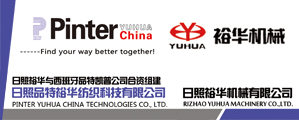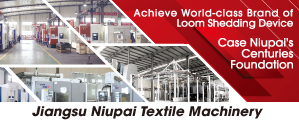Man-made fiber industry enjoys optimistic transformation and upgrading
Dec 05, 2017 | by Flora
As an important fundamental industry of the national economy, the man-made fiber industrial chain is integrated into the era development and it assumes the responsibility of advancing. Each link of the industrial chain is connected with each other. After the development and accumulation of several decades, the new produced polyester, PTA and other plants keep on increasing, so that the industrial capacity is seriously excessive and the industrial profit keeps in decreasing gradually. Since the 18th National Congress, the man-made fiber industry has taken initiative to understand the new normalcy and put great efforts to get used to and lead the new normalcy. In addition, the supply-side structural reform is promoted steadily. It makes a promote and resolute decision to eliminate capacity, instead it transforms and upgrades to seek for development. After being tested by the born of fire, it has realized success with world-wide attraction and achieved the anabiosos and turnaround of the whole industry.
The report of the 19th National Congress pointed out to continue to deepen the supply-side structural reform, and insist on eliminating capacity, inventory and lever, reducing cost, supplementing short slab, optimizing the resource allocation of the inventory, expanding high-quality increment supply and realizing the dynamic balance of supply and demand.
JLC analyzer - Qiu Qianqian expressed that: firstly, in the polyester raw material PTA industry aspect, because of the large amount of investment in the past seven years, PTA capacity has been increased from less than 15 million tons/year in 2010 to over 46.005 million tons/year in 2017 dramatically, with the increasing of more than two times, so as to cause the situation with excessive PTA capacity. The industry has been trapped in losses for a continuous several years. Even the leading enterprises also had losses for a while. Therefore, the industry generates one “capacity eliminating and inventory reducing” supply-side revolution and structural regulation.
In the supply-side revolution, as to the leading enterprises with new equipment, large capacity scale and good cost control, the non raw material cost of PTA manufacturing can be controlled within RMB500 - 600/ton. However, the old equipment has a non raw material cost of RMB800 - 1,000/ton. The cost differences of enterprises with different scales are quite great. The old equipment with low efficiency is forced to stop operation for a long period and confront to be weeded out. According to the statistics, the capacity in long-term operation stopping at present exceeds 11.85 million tons, which is over 1/4 of the total PTA capacity, so that the capacity enabling the normal PTA operation is about 34.155 million tons. In addition, the industrial concentration has been increased dramatically. The top two private enterprises (Yisheng and Hengli Petrochemical) have an occupation of almost 55% in the normal operating capacity. In addition, the capacity utilization rate in normal operation is also improved to be around 90%.
Secondly, as to the polyester industry, according to the statistics of JLC, in 2010 - 2014, the polyester capacity has been increased from 28.60 million tons/year to 44.32 million tons/year, with an annual capacity increasing of 11.4%. The continuous expanding polyester industrial chain market is forced to face the situation with excessive capacity. All the relevant industries of polyester industry have the characteristics of structural, regional and periodical excess. As a result, the relevant markets of the polyester industrial chain is always in the decreasing phase since the fourth quarter of 2011 and trapped in loss continuously. However, since 2015, in continuous deepening of “capacity elimination and inventory reduction” of the polyester market, we have also got the good news that all related products of polyester have won profits. Meanwhile, at the best times, several polyester products can have profits of over RMB 1000/ton.
In addition, the total production capacity of the related industries of the polyester product chain in China maintains the first position in the whole world. However, in recent years, the international market has unceasingly trade conflicts. The export anti-dumping cases of the United States, Japan, Pakistan and other countries aimed at the relevant products in China keep on growth. It also alarms us that in the international competition, our relevant products of the polyester industrial chain not only must have the advantages on price and quantity, but also possess the strengths of high quality. It is affirmed that the relevant industries of the fiber industrial chain will have brighter futures because they keep on innovating, optimizing the industrial structure and transferring the growth motivation under the guidance of the relevant politics and economies in China.
In the end, the polyester and polyester fiber industry in the downstream of the man-made fiber industrial chain maintains a slow growth in capacity in the condition of stable improving demand of the textile industry in the terminal. This year, some polyester and polyester fiber products even have the situation of tight supply. The upgrading paths of the terminal textile related industries are still in the throes of transformation. However, the future of this strong textile country will also point out the new direction for the development of the polyester and polyester fiber industry.
Environmental protection is a difficult task for the textile industry. The emission and pollution of the printing and dyeing waste water and gas have always been an important element restraining the sustainable development of the textile industry and ecological environment protection in China. The data indicates that the industrial waste water of the textile industry has a daily emission load of about 31 million tons, in which the dyeing and printing waste water occupy about 80%. Because the quality of the printing and dyeing waste water differs according to the different raw materials, producing varieties, producing technologies and administration levels, so that the waste water converged after various printing and dyeing procedures is quite complicated. As the fast development of the dyeing industry and the improvement of the after-treatment technology, the new auxiliaries, dyes and finishing agents are widely used in the printing and dyeing industry. The contents of the degradation-resistant organic ingredients are higher and higher. Therefore, how to improve the comprehensive regulation ability on environmental protection, promote industrial greenization, accelerate the transformation and upgrading of the whole industry are the outstanding problems confronted by the textile printing and dyeing industry at present.
One entrepreneur also expresses that: the short-term flourishing is not the target of the textile and fiber market. Only through optimizing the industrial chain structure can get a longer development. We have to convert the spirit in the report of the 19th National Congress into powerful development motivation to plan and design in a better way. Moreover, we still have to possess a more long-range eyesight, so as to have a more brilliant future.








